At the beginning of the eighties the Bundesministerium für Forschung und Technik (BMFT), what could be translated as "Federal Bureau of Research and Technic",
gave out research orders for the German industry. Four groups started research on the "Auto 2000": Audi, Mercedes, VW and a group of
three universities ("my" university, the Technical University of Darmstadt among them). Audi got the least money but started work eagerly
nevertheless. The result was a future-oriented car that was close to normal production cars. Perhaps this was not clearly visible at
the IAA in 1981, but when the Audi 100 Type44 was introduced in late 82. The optical similarities between these two cars are striking,
even if front and side line are slightly different.
The car was driven by an 1.6 litre 4 cylinder aluminium engine, boosted by a turbocharger. Surprisingly the engine hat a carburetor
eventhough Audi already had experience for years with the Jetronics. But the engine already had a very modern electronic engine
management. Result was an engine that could run very lean. The disadvantage that modern lean engines and GDI have, the high
amount of NOx seem to be of less importance 20 years ago. So here are the emmissions: HC: 4g/test, NOx: 6g/test C= 36g/test
after the then up-to-date ECE norm (have to look that up).
The car weighed 1180kg that were pushed to 180km/h (112.5mph) by the 90PS. The fuel consumption was pretty low, also as a result of
the long-geared gearbox (after the ECE/DIN norm: 5,0/6,9/8,5 litre/100km at 90/120/Stadt (56/75/city) ).
Why did Audi not use a TDI? Well, this is a rather long story. So here it is in short: Audi had devellopped a fourcylinder TDI without
instruction of VW. When Audi presented that engine to VW, they reacted inadequate and forbid the further development of diesel
engines at Audi. Furthermore, all documents were brought to Wolfsburg. But Audi did not give up: the development of the fivecylinder
engines was completely an Audi business. So a fivecylinder TDI was constructed. This engine saw presentation to VW in 1982.
Besides that the money from the BMFT was shortened so that a planned fivecylinder diesel and a fourcylinder with the futuristic
possibility to switch off single cylinders could not be developped.
Some parts of the chassis came from the Audi 100, some were made of high-tech materials. Tires were 165 HR 14, not really spectacular.
The design of the aluminium rims ressemble that of the wheel covers of the Type44. The engine block was placed in special bearings
that were similar to the ones that were used almost 10 years later in the 100 TDI. In the concept car these were active bearings that could be adjusted in their resonance frequency so that the amplitude of vibration could be minimized.
The innovations did not stop at the body. The drag coefficient of 0.30 (some say 0.29) with two rear view mirrors was really good and on
one level with the Type44. More revolution lies under the hull: Only the skeleton consisted of steel (photo). The roof is a sandwich
construction of aluminium and fiber enforced plastic. The hood consists of aluminium with a core of polyurethan that absorbs energy in
case of a collision with a pedestrian. The trunk-"hood" consists completely of plastic. The bottom of the car consists of alu, steel
and plastics. During assembly it was put into the body and glued in place. Advantage of this construction is beside the good protection
against corrosion a good insulation against noise and heat.
Safety was considered, too: Airbag and ABS are standard for a not too long time. Kneepads seem rather strange today, eventhough the idea is right. The additional stiffeners for a side impact are standard today. In contrast to the "Auto 2000" of Mercedes, Audi did not extremely utilize electronics. Two large round instruments dominate the dashboard. In the left one momentary and average fuel consumption are
displayed, while the other shows the speed. Between them sits a kind of on-board computer, giving information about the most important
functions of the car.
The car would need a service (including oil change) only every 30,000km (19,000miles)-still okay today.
To conclude, I must say the car was ahead of time, but that was what it was supposed to be. Some of its solutions are standard today,
others could not be used in mass production and some were extinct by changing taste.
Click to see the pics with a width of 800 pixels
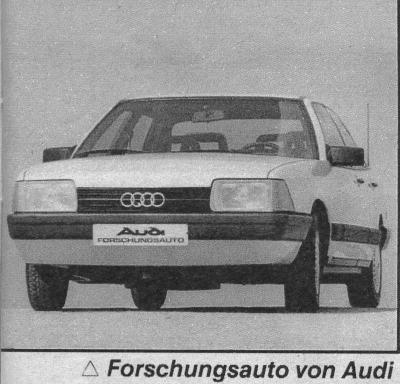 (1) (1)
 (1) (1)
 (2) (2)
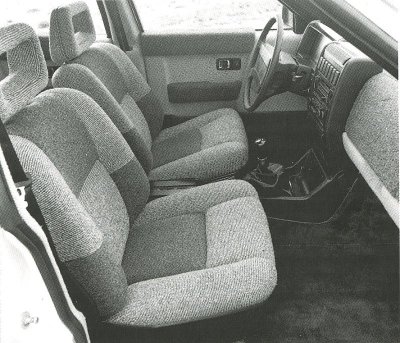 (2) (2)
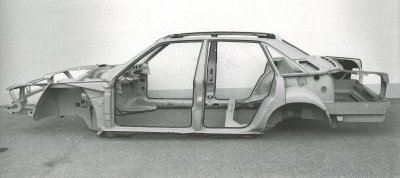 (2) (2)
Here, finally a coloured picture:
 (3) (3)
The following pic shows -according to the source- the bottom (see above) of the concept car.
I have the suspicion that it is a positive 1:1 model of it.
You still can see the different types of plastic used for it and the batch on the middle tunnel.
 (3) (3)
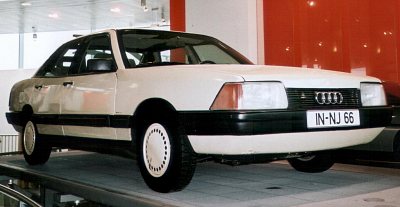 (6) (6)
This photo was taken by Hans at the "museum mobile" of Audi in Ingolstadt.
I think that it really shows the similarity between the Auto 2000 and the Type44.
So let's have a look at the other Auto2000 concept cars
First the solution of VW:
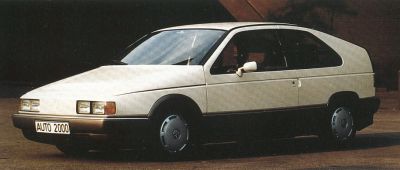 (3) (3)
Mercedes had planned a gas turbine, but then used a conventional engine.
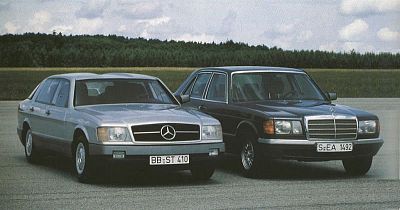 (2) (2)
The four universities of Berlin, Stuttgart, Aachen and Darmstadt presented the car pointing furthest into the future:
 (3) (3)
A very intersting table comparing cD values was issued by the Unicar team:
Above left you see the silhouette of a Citroen CX.
And below?
When I told my suspicion to my friend in the lecture of Professor Breuer,
who had worked in the Unicar team and showed us that transparent, my friend just shook his head.
Decide for yourselves on the last picture!
 (4) (4)
In the lower half of the picture you can see the fully sealed bottom of Unicar.
Normal cars create more than 50% of their drag beneath the car!
 (5) (5)
And? Was I right? I think so.
|